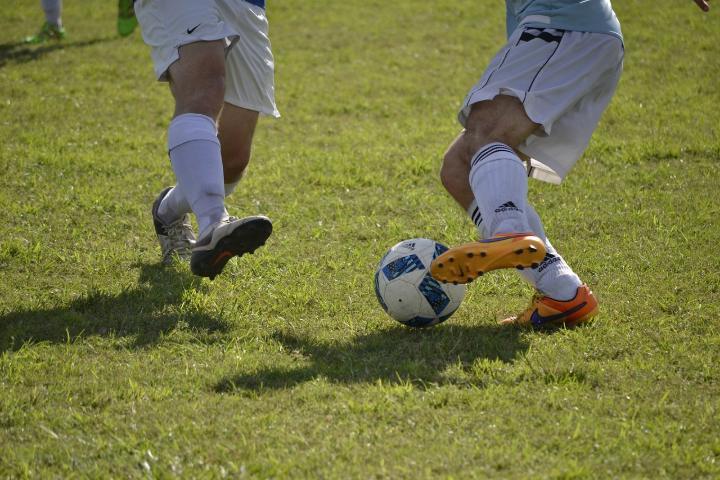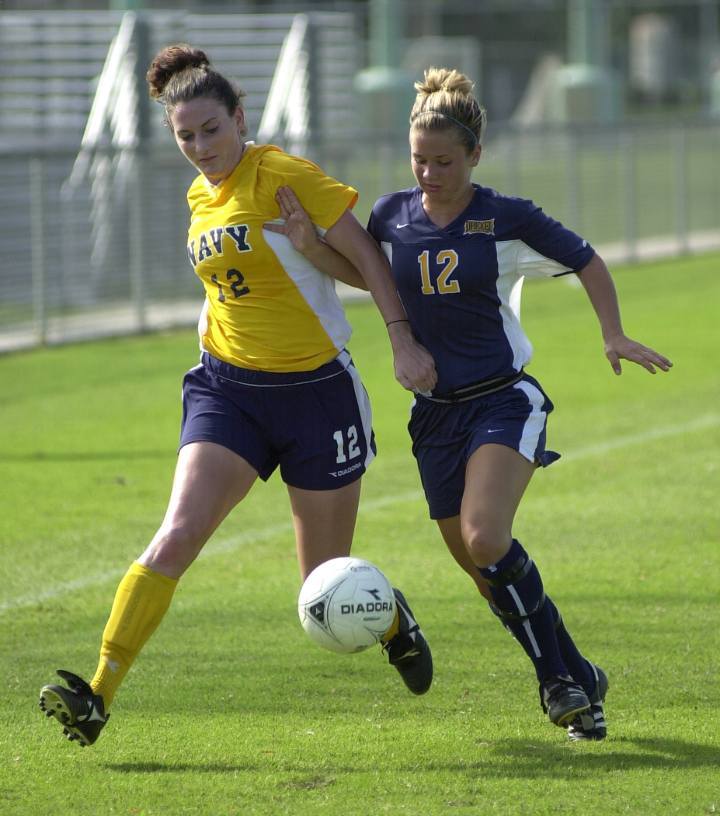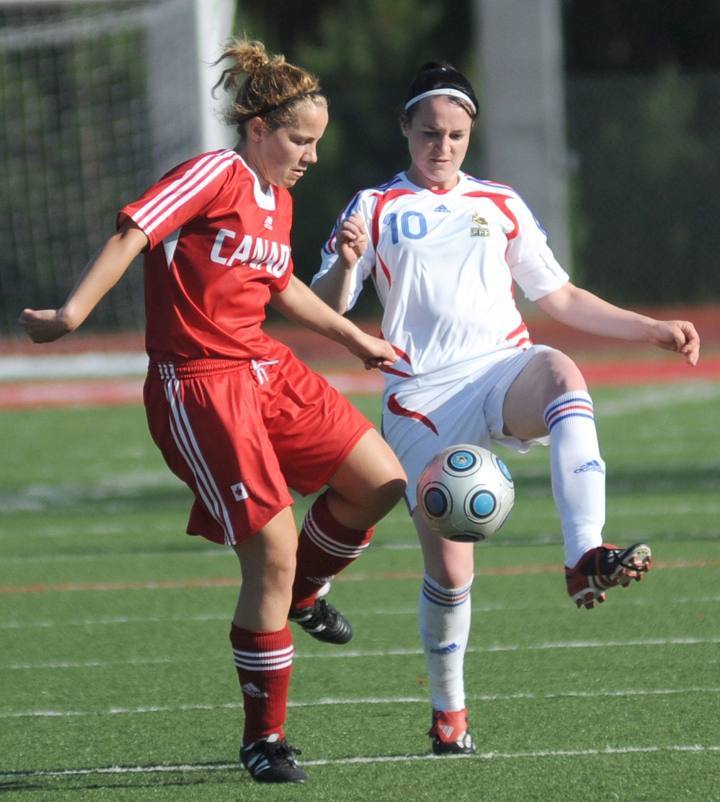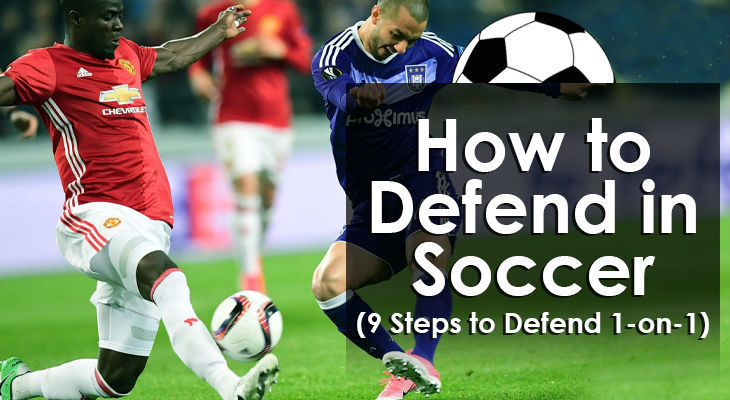How to Defend in Soccer (9 Steps to Defend 1-on-1)
Knowing how to defend in soccer is an important skill no matter where you play out on the pitch.
While defenders perform last-second sliding tackles to prevent a certain goal, midfielders and strikers must hassle, harry, and hound the opposition further up the field…
Forcing them into a mistake and capitalising on errors to spring a counterattack.
1-on-1s are a crucial first step for players to practice to learn how to defend in soccer.
Getting them wrong can spell disaster as your opponent leaves you on your backside and sprints in on goal with the team left exposed.
When faced with an onrushing player in this type of situation, it is important to stay calm, keep your eye on the ball, and patiently await the perfect time to put in a challenge.
In this article, I’ll break down 9 steps to make defending 1-on-1’s easier for you.
How to Defend in Soccer 1-on-1's
Defending in a 1-on-1 situation is one of the toughest things to do in soccer.
But fortunately, there are a number of ways to turn the situation in your favour.
Before jumping in and making a challenge, players need to analyse what's going on, decide on what they're going to do, and then carry it out to the best of their abilities...
...all in a split-second.
If you take all of the following steps into account then you'll greatly improve your chances of successfully taking the ball off of your opponent and stopping their attack in its tracks.
So when faced with a 1-on-1, you first need to:
1. Stay calm and assess the situation
First, you must take your position into account before deciding what to do next.
If you’re in the opponent’s half with teammates in position behind you, then you can commit to the 1-on-1 without too many worries if you don’t come away with the ball.
But in or around your own box, it’s a completely different story…
If you’re the team’s last player, you can’t afford to attack the ball and risk the player getting past and getting an easy shot on goal.
Also…
Understand what type of player your opponent is.
How you defend a highly-skilled and speedy player will be completely different to how you defend one of the opponent’s weakest players.
2. Close down the opponent
Now it’s time to engage the opponent and force them to make a decision by quickly pushing up on them and closing down the space in which they have to operate.
When aggressively approaching the player with the ball, curve your run so that you force the opponent away from goal or direct them into a part of the pitch which is less dangerous.
This will often force them into a mistake or will allow you to contain them.
(quick note - give them extra space if the opponent is very quick!)

3. Take up the correct position
With the player advancing quickly and looking to get past you, it’s important that you get your body into the right position and stance to successfully defend the 1-on-1.
Bend your knees so that you have a low centre of gravity and keep your arms up slightly as this helps you to keep your balance when backpedaling towards goal.
So you’re not caught flatfooted, position your body in a way that you’re influencing the attacking player in the direction you want them to go.
By staying on your toes you can quickly engage your opponent if an opportunity arises or change direction if they dart to either side of you.
4. Be patient and jockey them
Many defenders make the mistake of either pushing up too aggressively on their opponent and immediately getting beaten for pace…
Or they just dive straight into a challenge that wasn't necessary in the first place.
By jockeying the attacking player you win yourself and your team some time (providing that you have taken up the correct position) and also increase the chances that your opponent will let their guard slip and make a mistake.
It’s important to be patient and wait for the best moment to either win the ball back or punt it away to safety.
5. Capitalise or force your opponent into a mistake
Once you see an opening arise (such as the attacking player letting the ball get away from them a bit or using their weaker foot), you need to pounce on their mistake and use it to your advantage.
Use your positioning to force them into these compromising situations as you should be doing your best to dictate where they end up on the pitch.
Add in some fake tackles or forward moves to keep them guessing what you're going to do next.
With all of the pressure you put them under, you’ll make them hesitate and second guess what they should do next to get past you, and this gives YOU the advantage.
When they do make a mistake then it’s the opportune moment to be proactive and now your decision-making comes into play.
6. Decide upon what course of action to take
If the scenario arises where you believe you have an opportunity, it’s time to either poke the ball away or put in a firm challenge to stop them in their tracks.
In a situation where the player has overrun the ball, you may find that you don't need to make a full-blooded tackle but can instead simply put your body between them and the ball.
Then either power away with it at your feet, pass it back to your keeper, or clear it into touch and give your team time to reassemble.
Alternatively, it may be better to simply shepherd them away from goal if you can see that they have given up taking you on and are instead looking to play the ball to one of their teammates.

7. Time the tackle to perfection
If you determine that a tackle is indeed the best course of action, then you need to time it to perfection otherwise you risk fouling the opposition player.
And if you're the last player in your team, that could well result in a red card.
Therefore, you want to keep your studs down, make certain that you'll get to the ball first, and that the ball won't end up in a dangerous area if you do make the tackle successfully.
Weigh up the situation and think about whether a block tackle, sliding tackle, or poke tackle would be the best option.
8. Go in with confidence
Whatever course of action you settle upon, you need to go in confidently.
Knowing full well that you'll make a successful tackle or intervention and prevent them from beating you in a 1-on-1.
You need to fully commit as going in indecisively lessens your chance of success as any doubts can put you off your game.
This is also quite dangerous as you may then inflict an injury upon your opponent or even injure yourself if you don't tackle in the correct manner.
9. Get back into position and reorganise
Whether you have punted the ball to safety, put in a bone-crunching tackle, or have regained possession and have played it on to a teammate…
Following your intervention you want to get back into position and reorganise the defence as quickly as possible.
Teams should not concede 1-on-1’s on a regular basis and communication, teamwork, and positioning are the best means to prevent them from happening in the first place.
Having come out on top in your duel, you want to keep your focus and help your team to win the match at hand.
So now that you know the thought process and actions that you should take when facing a 1-on-1 in soccer, what are some tips that can help you out when defending against them?

Tips to Defend Against 1-on-1s
If you follow the steps we just went through and practice often, you'll stand the best chance of coming out on top of any 1-on-1 you face.
Here are some ‘summary’ tips to turn any 1-on-1 situation to your advantage.
- Only make a tackle if you have to.
- Close down the space quickly.
- Maintain pressure.
- Force your opponent to make a decision.
- Keep them guessing whether you'll put in a tackle.
- Position your body correctly to avoid being beaten flatfooted.
- Shepherd them away from goal.
- Be patient.
- Slow them down.
- Force them onto their weaker foot.
- Force them to make a mistake.
- Decide on the best form of action.
- Act decisively and confidently.
These tips are key to you making a success of defending against 1-on-1s.
(even more tips here if you're interested)
Also…
There are a couple of mistakes which defenders often make and these are to:
- Not close down the attacking player's space quickly enough
- Dive in too quickly or to execute a poorly timed tackle
- Get sent off or left on their backside as their opponent tears past them.
By following the above tips you'll avoid making these mistakes and so force your opponent to take risks to get past you and this puts the situation in your favour.
Conclusion:
With a tricky winger bearing down on you, their legs a blur as they do step over after step over, defending a 1-on-1 can be a nightmare for any defender.
And any mistake can result in a red card or a goal for the opposition.
Winning the ball in a 1-on-1 at a crucial time in the match is just as important as a game winning goal, and nothing feels better than performing a heroic last player tackle to prevent the opposition from scoring.
By following the above tips and practicing out on the training ground, you'll greatly improve your chances of winning your 1-on-1’s time and time again.
Good luck!

